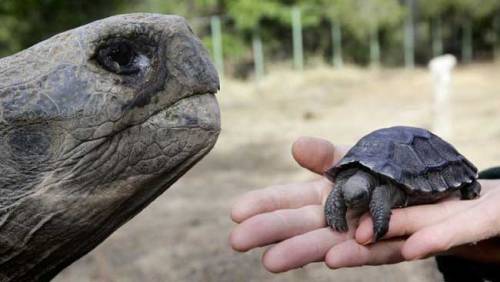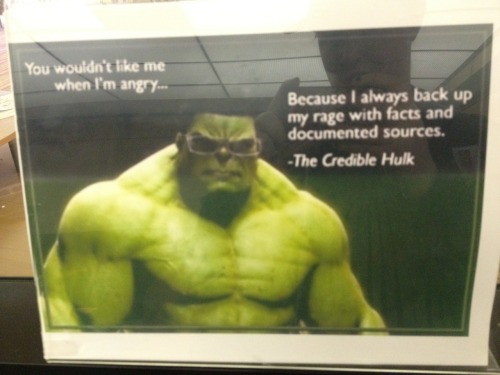700,000-Year-Old Stone Tools Point To Mysterious Human Relative
700,000-Year-Old Stone Tools Point to Mysterious Human Relative

Someone butchered a rhinoceros in the Philippines hundreds of thousands of years before modern humans arrived—but who?
Stone tools found in the Philippines predate the arrival of modern humans to the islands by roughly 600,000 years—but researchers aren’t sure who made them.
The eye-popping artifacts, unveiled on Wednesday in Nature, were abandoned on a river floodplain on the island of Luzon beside the butchered carcass of a rhinoceros. The ancient toolmakers were clearly angling for a meal. Two of the rhino’s limb bones are smashed in, as if someone was trying to harvest and eat the marrow inside. Cut marks left behind by stone blades crisscross the rhino’s ribs and ankle, a clear sign that someone used tools to strip the carcass of meat.
But the age of the remains makes them especially remarkable: The carved bones are most likely between 631,000 and 777,000 years old, with researchers’ best estimate coming in around 709,000 years old. Read more.
More Posts from Dotmpotter and Others

Baby Tortoises Show Up In The Galapagos For The First Time In Over A Century
There hadn’t been one single baby tortoise sighting in more than a century on the Galapagos Island of Pinzon, until a small group of the tiny, shelled youngsters were spotted this year.
The recent births are helping to pull the critically endangered animals back from the brink of extinction after they were nearly laid to waste as a result of human activity.
This is huge news for a species that has been struggling to survive for a century, relying on humans raising young tortoises bred in captivity until they are large enough to not fall prey to rats and predators.

“A bus map you often see is the same thickness and same color line for the whole network: It makes [agencies] look like they’ve got the whole place covered,” says Wiggins. “That’s to the benefit of them and not to the rider.”
Wiggins thinks transit maps designed around coverage ultimately harm the system as a whole. Instead of using the map to find a bus route that works for a particular trip, riders stick to one specific line whose schedule they know—avoiding the map altogether. The result is a ridership that ends up taking a car more than it otherwise might, and one that objects loudly when the agency proposes a system change that would force them to learn a new route.
“I think with a better map, it actually might facilitate people being able to let go a little bit,” he says. “It stops becoming ‘this is my route and this is what I cling to’ and more of a network you can relate to.”
How San Francisco Got Its New Rider-Friendly Transit Map
“A little chocolate won’t do any harm.” You’ve likely heard your chocolate-loving friend utter this sentence on more than one occasion, or maybe it’s a mantra that you use yourself. But frankly, it undersells chocolate’s myriad benefits. This sweet is capable of much more than simply “not harming” you – it can help you. In fact, there are scientifically-backed studies that prove chocolate can help you live a better life (and we’re not just talking about the happiness you derive from its deliciousness).
Want to know more about how millions of people are forced to pick cotton by the Government of Uzbekistan every year?
This video explains the issue clearly in just two minutes:

Artificial optical materials could allow cheaper, flatter, more efficient detectors for night vision and other uses
A new way of taking images in the mid-infrared part of the spectrum, developed by researchers at MIT and elsewhere, could enable a wide variety of applications, including thermal imaging, biomedical sensing, and free-space communication.
The mid-infrared (mid-IR) band of electromagnetic radiation is a particularly useful part of the spectrum; it can provide imaging in the dark, trace heat signatures, and provide sensitive detection of many biomolecular and chemical signals. But optical systems for this band of frequencies have been hard to make, and devices using them are highly specialized and expensive. Now, the researchers say they have found a highly efficient and mass-manufacturable approach to controlling and detecting these waves.
The findings are reported in the journal Nature Communications, in a paper by MIT researchers Tian Gu and Juejun Hu, University of Massachusetts at Lowell researcher Hualiang Zhang, and 13 others at MIT, the University of Electronic Science and Technology of China, and the East China Normal University.
The new approach uses a flat, artificial material composed of nanostructured optical elements, instead of the usual thick, curved-glass lenses used in conventional optics. These elements provide on-demand electromagnetic responses and are made using techniques similar to those used for computer chips. “This kind of metasurface can be made using standard microfabrication techniques,” Gu says. “The manufacturing is scalable.”
Read more.
Robot Taxi: autonomous mobility for senior citizens in rural areas
Autonomous mobility. A future market, everyone is targeting: Google, Uber, Tesla, Apple, Baidu and a bunch of old-econmoy automotive players. Everybody wishes to triumph with its technology. But have you heard of :DeNA?
The Japanese tech company (originally a mobile gaming company with a net worth of over $1 billion) wants to develop the best smartphone-driven orchestration software for a fleet of robocars. :DeNA just started a new company called “Robot Taxi”, with - not surprisingly - a lucrative future robo-taxi market in mind. The nice thing is, however, that they initially don’t aim for the young urban metropolitan-elite, but rather focus on rural areas and senior citizens. Gizmodo has the story:
Today, it was announced that road tests will begin next year in Kanagawa prefecture, south of Tokyo. Fifty people will travel in trips of two miles from their homes to grocery stores, with a Robot Taxi employee on board as a safety precaution, the Wall Street Journal reports. And the demographics the company is targeting? Senior citizens, and people with no access to public transportation.
Certainly, Japan has a demographic problem and the societal views on robots differ immensely to the rest of the world. But it’s refreshing to see, that (profit oriented) companies exist, which are working on future services with people in mind.
[Robot Taxi] [via gizmodo] [read more about DeNA]

Tinysaur, Tiny Dinosaur Fossil Models You Can Build Yourself
The astonishing story of Xavier Plassat, a French friar who has fought slavery for decades in the Brazilian Amazon, via Vanity Fair.



READ the abolitionist’s compelling tale here that brought him to the frontlines of 21st century slavery.
Anyone who believes exponential growth can go on forever in a finite world is either a madman or an economist.
Kenneth Boulding
-
 blushingbf liked this · 2 years ago
blushingbf liked this · 2 years ago -
 supernintendo-1987 reblogged this · 6 years ago
supernintendo-1987 reblogged this · 6 years ago -
 elitafuckingone liked this · 6 years ago
elitafuckingone liked this · 6 years ago -
 fly-off-to-the-clouds liked this · 6 years ago
fly-off-to-the-clouds liked this · 6 years ago -
 aerialworms reblogged this · 6 years ago
aerialworms reblogged this · 6 years ago -
 heartshapedbrainrot liked this · 6 years ago
heartshapedbrainrot liked this · 6 years ago -
 susebron reblogged this · 6 years ago
susebron reblogged this · 6 years ago -
 dark-and-sparkles reblogged this · 6 years ago
dark-and-sparkles reblogged this · 6 years ago -
 ocean-light reblogged this · 6 years ago
ocean-light reblogged this · 6 years ago -
 fishdoeslanguages liked this · 6 years ago
fishdoeslanguages liked this · 6 years ago -
 ineededanamebutsomeonetookit reblogged this · 6 years ago
ineededanamebutsomeonetookit reblogged this · 6 years ago -
 ineededanamebutsomeonetookit liked this · 6 years ago
ineededanamebutsomeonetookit liked this · 6 years ago -
 dynoh-hh liked this · 6 years ago
dynoh-hh liked this · 6 years ago -
 fightingformore reblogged this · 6 years ago
fightingformore reblogged this · 6 years ago -
 panromantic-pancake-panda liked this · 6 years ago
panromantic-pancake-panda liked this · 6 years ago -
 whoopsied-dasies reblogged this · 6 years ago
whoopsied-dasies reblogged this · 6 years ago -
 mckitterick reblogged this · 6 years ago
mckitterick reblogged this · 6 years ago -
 mckitterick liked this · 6 years ago
mckitterick liked this · 6 years ago -
 drakatzen reblogged this · 6 years ago
drakatzen reblogged this · 6 years ago -
 myqueerest liked this · 6 years ago
myqueerest liked this · 6 years ago -
 calystarose reblogged this · 6 years ago
calystarose reblogged this · 6 years ago -
 weredrakka liked this · 6 years ago
weredrakka liked this · 6 years ago -
 chocmarsh reblogged this · 6 years ago
chocmarsh reblogged this · 6 years ago -
 chocmarsh liked this · 6 years ago
chocmarsh liked this · 6 years ago -
 onionhighonionandrenown reblogged this · 6 years ago
onionhighonionandrenown reblogged this · 6 years ago -
 onionhighonionandrenown liked this · 6 years ago
onionhighonionandrenown liked this · 6 years ago -
 turtleislandmohawk liked this · 6 years ago
turtleislandmohawk liked this · 6 years ago -
 gorlustme liked this · 6 years ago
gorlustme liked this · 6 years ago -
 laevithin liked this · 6 years ago
laevithin liked this · 6 years ago -
 technologywithcarter liked this · 6 years ago
technologywithcarter liked this · 6 years ago -
 pai-seh liked this · 6 years ago
pai-seh liked this · 6 years ago -
 branovices liked this · 6 years ago
branovices liked this · 6 years ago -
 jordanlhawk liked this · 6 years ago
jordanlhawk liked this · 6 years ago -
 justastormie liked this · 6 years ago
justastormie liked this · 6 years ago -
 hearthburn reblogged this · 6 years ago
hearthburn reblogged this · 6 years ago -
 nocticola liked this · 6 years ago
nocticola liked this · 6 years ago -
 charming-gremlin liked this · 6 years ago
charming-gremlin liked this · 6 years ago -
 hearthburn liked this · 6 years ago
hearthburn liked this · 6 years ago -
 ralph-the-ranger-wood-elf liked this · 6 years ago
ralph-the-ranger-wood-elf liked this · 6 years ago -
 ach-lass-das-sein reblogged this · 6 years ago
ach-lass-das-sein reblogged this · 6 years ago
